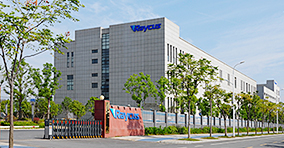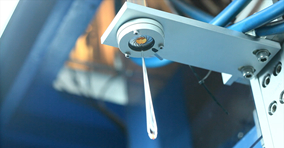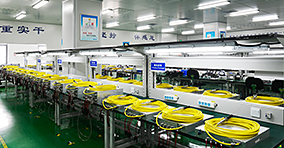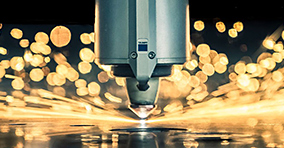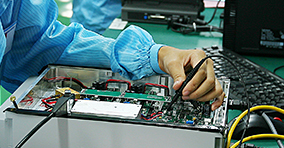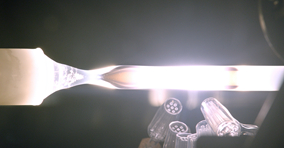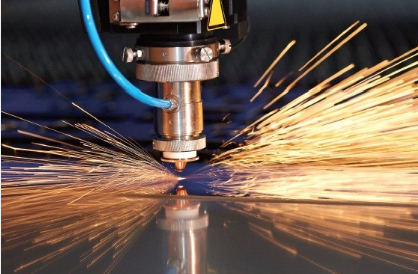Market Research: Global Laser Industry Welcomes New Opportunities
According to the latest market research report “Global Laser Processing Market Forecast 2016-2022 “, by 2022, the global laser processing market is expected to reach US $ 9.75 billion, with a compound annual growth rate of 6 years. 13%.
During the forecast period, the Asia-Pacific region will occupy the largest share of the global laser processing market. With the acceleration of new applications and automation, China, Japan and South Korea will become the most important laser application markets.
In 2016, the laser industry showed development trends featuring fiber lasers , picoseconds, femtosecond ultrafast laser technologies, and ultraviolet laser processing as highlights. Laser precision micromachining is gaining more and more applications in industries such as new energy, information technology, biomedicine, new materials, electronics and aerospace , including precision drilling, engraving, grooving, surface texturing, and surface modification. , Internal modification, trimming, cleaning, additive manufacturing and other processes. In addition, the concepts of intelligent manufacturing and new energy provide a good development environment for lasers .
Laser cutting market grows steadily
It is reported that the compound annual growth rate of the laser cutting machine market during 2016-2020 will reach 8.91%. High power laser cutting equipment can process a wide range of materials with high accuracy, whether steel, aluminum or plastic. Its versatility gives manufacturers the flexibility to cut materials and create products and components with complex geometries. In the past few decades, the laser cutting industry has undergone a series of changes, including improvements in the quality and thickness of the cutting material, and increased machine power and efficiency.This has enabled today’s laser cutting machines to operate at higher speeds, higher accuracy and greater accuracy. Excellent quality efficiently processes countless parts and components including automotive, aerospace, healthcare, plastics, electrical and electronics, textiles, woodworking, etc.
The rapid development of laser cutting machine technology and the emergence of advanced equipment have made it more and more applied in the medical industry . In addition, the product’s share in metal processing always occupies the top spot. It can use super-finishing technology to create metal parts with excellent quality: whether it is precision cutting of hot-formed sheets, or car bodies and tubes with complex designs and dimensions. Shaped parts. Today, traditional cutting machines are increasingly being replaced by laser cutting equipment with excellent beam quality and high degree of automation.
At the same time, thanks to the advancement of domestic fiber lasers, control systems, processing heads, and laser cutting machine integration in the field of technology and cost, in 2016, the number of laser cutting machines used in the sheet processing market has basically doubled. These developments have also accelerated the conversion of traditional production processes, which were originally based on punches and shears, to laser processing.
The steady growth of the automotive industry is one of the core factors driving the global laser cutting machine market. Over the past few years, auto production capacity in Asian countries such as China and India has grown significantly. The recent rapid development of industrial fiber lasers and disc lasers has also brought major technological transformations to traditional solid-state laser processing. In the forecast period, such lasers will become the mainstream trend in the global laser cutting machine market.
High-power lasers become darlings of the market
The growing demand from the industrial sector is currently driving the development of high-power lasers worldwide. Industrial applications of high-power lasers can be divided into macro machining and micro machining. Macro machining includes cutting, welding and marking applications. Micromachining mainly includes the production fields of semiconductors, printed circuit boards, flat panel displays and solar cells.
In recent years, laser diode innovations in design and manufacturing processes have created more benefits for the cost and reliability of high-power laser systems. Lasers with compact size, high photoelectric conversion efficiency, and low power consumption are in great demand
increase. At the same time, with the improvement of semiconductor laser materials and mounting technology, it is expected that the semiconductor laser market will continue to expand in the field of material processing such as cutting and welding. In addition, innovative optical combination solutions will also help the high-power laser market.
According to a new report released by Grand View Research, by 2024, the global semiconductor laser market is expected to reach $ 9.52 billion. Among them, high-power semiconductor lasers and optical fiber lasers are the two core products leading the market.
From a regional perspective, based on the rapid expansion of its manufacturing industry, Asia-Pacific markets such as China, Korea, and Taiwan will experience huge growth in demand for high-power lasers. The large semiconductor industry has also created more development space for laser micromachining. In addition, high-power lasers are witnessing growing demand in aerospace, defense, automotive, and medical applications in Europe and North America.
Fiber laser market CAGR will reach 11.7% within 6 years
According to a new report released by Allied Market Research, the global fiber laser market is expected to grow from US $ 14.43 billion in 2015 to US $ 31.13 billion by 2022. The compound annual growth rate from 2016 to 2022 is 11.7%.
In 2015, fiber lasers accounted for 31% of the total revenue of the global laser market and are expected to reach 39% by 2020.
With the continuous deepening of the value proposition of fiber lasers, the market demand for traditional CO2 and solid-state lasers may decline.
The growing demand from the industrial sector is currently driving the development of high-power lasers worldwide.
Factors such as technological advancement, environmental friendliness, and higher beam quality at lower costs have driven this market development, making fiber laser systems an attractive choice for marking and cutting applications. The advent of ultra-fast and multi-core fiber lasers and the continued growth of fiber lasers in micro-cutting, 3D micro-milling, blind hole processing, optical pumping, scribing, surface treatment and micro-applications are driving the global market expansion. Fiber laser solutions that are easy to automate and save energy are increasingly replacing traditional methods for mechanical marking, such as chemical etching and ink printing.
Tube cutting applications are the most prominent in the global fiber laser market, mainly due to the increasing proportion of products in the production of cardiovascular stents. This is because such lasers have the advantages of unlimited cutting configurations, reduced production costs, and the ability to eliminate overlapping tolerances. Other potential and popular sectors include 3D cutting, flat cutting and powertrain applications. Fiber laser unit excellent beam steering capability so as to be increasingly used in cutting applications 3D; and advantage as the cutting plate is provided comprising a more tightly focused laser spot size, a higher depth of focus and faster Processing speed and greater working distance reduce workpiece tolerances.
According to Eswara Prasad, head of the chemical materials team at Allied Market Research, ” Quasi-continuous (QCW) fiber lasers have achieved tremendous growth over the past three years and have gradually replaced their bulky, Relatively inefficient traditional YAG laser . “
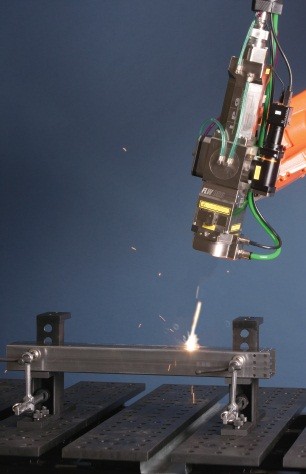
As the proportion of fiber lasers in cost-effective cutting and welding applications continues to increase, it is expected that the product will achieve a compound annual growth rate of 15.4% in the high-power application sector. At the same time, marking applications ranked second due to regulatory requirements that require the FDA to place unique identification numbers on all medical, dental, and surgical devices for consideration of patient safety and trade identification policies.
Key findings in this market report include:
● From 2016 to 2022, the Asia-Pacific region will continue to lead the market in terms of fiber laser revenue, followed by North America;
● From 2016 to 2022, the compound annual growth rate of the picosecond fiber laser market is expected to be 11.5%;
● Quasi-continuous green fiber lasers have the fastest revenue growth in the global visible fiber laser market, with a CAGR of 74.9%;
● Mexico is the fastest growing region for the North American fiber laser market, with a compound annual growth rate of 10.2% from 2016 to 2022;
● Tube cutting has the fastest growth in the field of high-power cutting applications in the global fiber laser market, which will achieve a compound annual growth rate of 16.7% from 2016 to 2022.
Medical industry becomesgrowth enginefor excimer and femtosecond laser systems
In 2016, the global excimer laser and femtosecond ophthalmic laser market grew steadily, with total revenue reaching US $ 666 million. Excimer laser systems continue to outsell femtosecond lasers. North America remains the largest market, and it is expected that the Asia-Pacific region will also create a profitable market for global excimer lasers and femtosecond lasers. From 2016 to 2026, this market will achieve a compound annual growth rate of 5%.
The significant increase in the elderly population and the rising prevalence of diabetes have become the demand drivers for this laser system. As the number of refractive and cataract surgeries increases, more hospitals and eye clinics are increasing the demand and use of ophthalmic laser systems. At the same time, increased awareness of health care in developing countries and increased spending have also fueled this market.
In terms of applications, in 2016, the refractive surgery market accounted for the largest revenue share of this laser series, reaching approximately 70%. The products also achieved the fastest growth in cataract surgery, cystectomy, laser trabeculoplasty and other fields. Among them, the cataract surgery market is the second largest application area of excimer lasers and femtosecond laser systems.
In terms of regions, North America will continue to maintain its leading market position. The total revenue of excimer and femtosecond ophthalmic laser systems in the region in 2016 was $ 217 million, accounting for more than 30% of the total market. Western Europe will continue to promote the application of this product. In addition, the continuous improvement of the medical infrastructure in the Asia-Pacific region is also expected to provide a lot of development opportunities for these products.
Broad prospects for China’s laser industry
Under the background of “Made in China 2025”, laser technology is bound to promote the manufacturing industry to expand to the high end of the value chain. Among the ten key areas released by this strategy, the demand for high-end laser technologies such as laser welding , laser cutting , 3D laser fusion printing and other fields in aerospace equipment and new energy vehicles will be continuously released .
In 2016, the annual growth rate of China’s laser industry reached more than 20%. With the help of the Chinese government’s vigorous promotion of smart manufacturing and the “Made in China 2025”, the industry is expected to continue to maintain rapid development in 2017.
In summary, the following trends may become the core of the domestic laser industry in the next few years:
● Laser R & D is developing in the direction of high intelligence, high power, high beam quality, reliability, low cost and all solid state. Semiconductor lasers , semiconductor pumped solid lasers and fiber lasers will become the mainstream of laser development;
● Laser technology is combined with other disciplines to continuously expand emerging applications such as laser chemistry and laser medical treatment. In particular, it is important to focus on the development of precision and microfabrication technologies, and to further expand in electronics, semiconductor, communications, optical storage, micromechanical manufacturing , biology, and environment Promote and apply high-precision laser processing technology to create unprecedented possibilities for traditional processing methods;
● The level of automation, integration and intelligence of laser processing has continued to improve. Based on the combination with industrial robot technology, it has realized multi-dimensional processing such as 3D welding, 3D marking, and 3D cutting, expanding the applicability and application field of laser technology. With the improvement of the technological level of light, machinery, electricity, and gas, China is rapidly leading China into the era of “light and intelligent manufacturing”.


